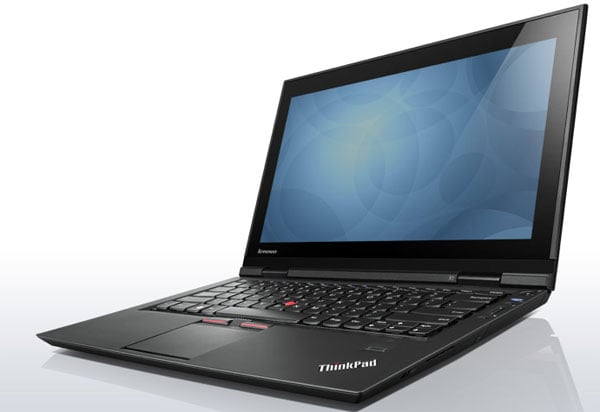Lenovo ThinkPad X1 Ultralight Laptop Review
Introducing The ThinkPad X1
The new Lenovo ThinkPad X1 is a formidable system. It's generally being billed as Lenovo's champion of choice vs. the Macbook Air. That comparison makes sense based on the Air's visibility, but the X1 is set to compete across the entire spectrum, including new thin and light machines from Dell and HP and in the enterprise, where perhaps the Air doesn't have a strong presence.
The specs for the machine we tested don't represent Lenovo's highest-end X1 configuration; the company sells two SSD-powered versions of the diminutive system as well. Here's a quick video walk-through of the system...
Our testbed included a 'Slice' battery (for very good reason); we've included its price along with the machine's full specifications in our list below.
The Core i5-2520M is Intel's midrange dual-core, HT-enabled mobile offering, with a 35W total TDP and Intel's HD Graphics 3000 integrated GPU. The CPU has a maximum clockspeed of 3.2GHz and the GPU can run at up to 1.3GHz. Intel's latest integrated GPU offering may not compete well with current low-end discrete chips from AMD and Nvidia, but it continues to push the CPU manufacturer's GPU performance upwards.

The first thing we noticed when we opened the ThinkPad X1 is how well-balanced the system is. Laptops are unbalanced more often than not, prone to tipping backwards due to the weight of the screen, battery, or both. The X1 is laterally stable with or without the additional bottom-mounted battery. We were initially concerned that the battery (which only covers part of the bottom of the system) would cause the machine to tip forward when installed. This does not occur. The screen, meanwhile, can tilt back 180 degrees--a potentially useful feature when watching content in cramped quarters.
The specs for the machine we tested don't represent Lenovo's highest-end X1 configuration; the company sells two SSD-powered versions of the diminutive system as well. Here's a quick video walk-through of the system...
Our testbed included a 'Slice' battery (for very good reason); we've included its price along with the machine's full specifications in our list below.
|
|
|
The Core i5-2520M is Intel's midrange dual-core, HT-enabled mobile offering, with a 35W total TDP and Intel's HD Graphics 3000 integrated GPU. The CPU has a maximum clockspeed of 3.2GHz and the GPU can run at up to 1.3GHz. Intel's latest integrated GPU offering may not compete well with current low-end discrete chips from AMD and Nvidia, but it continues to push the CPU manufacturer's GPU performance upwards.

The first thing we noticed when we opened the ThinkPad X1 is how well-balanced the system is. Laptops are unbalanced more often than not, prone to tipping backwards due to the weight of the screen, battery, or both. The X1 is laterally stable with or without the additional bottom-mounted battery. We were initially concerned that the battery (which only covers part of the bottom of the system) would cause the machine to tip forward when installed. This does not occur. The screen, meanwhile, can tilt back 180 degrees--a potentially useful feature when watching content in cramped quarters.








